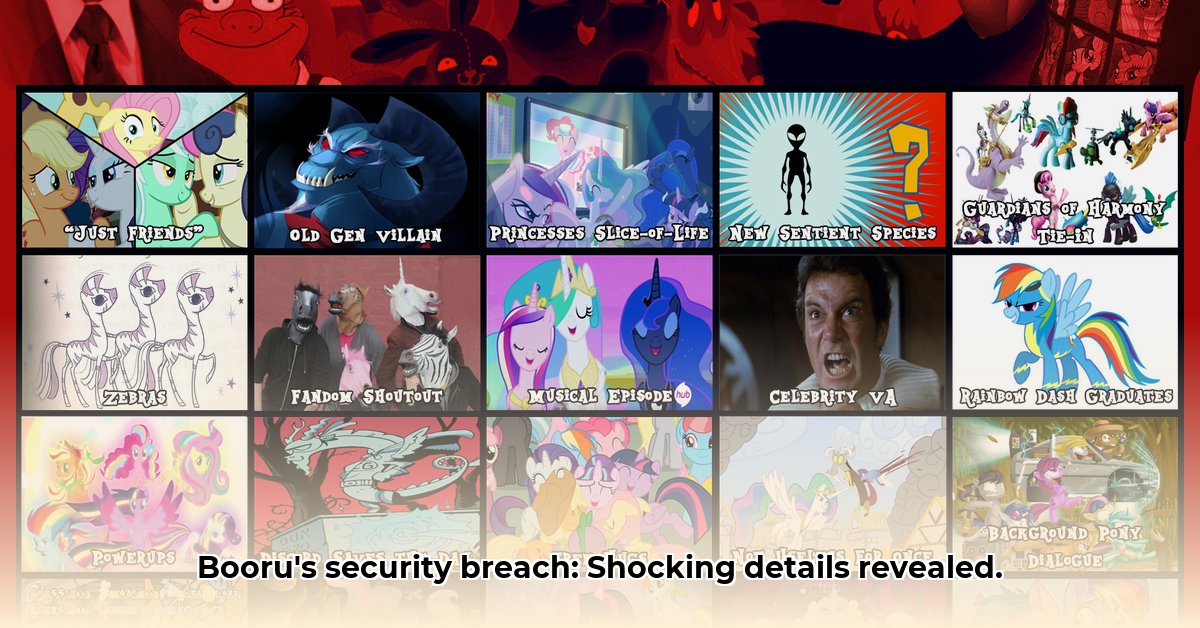
This report provides a preliminary security assessment of the online image board "Booru Allthefallen Mow," based on publicly available information. Due to limited data, this analysis focuses on general security best practices and recommendations, rather than a comprehensive vulnerability assessment. The findings presented here are inherently constrained by the lack of detailed technical specifications and security logs.
Website Access and Security
The website's continued operation suggests the presence of some basic access control mechanisms. However, the specific nature and effectiveness of these mechanisms remain unknown. The absence of publicly reported security incidents may reflect either robust security or a lack of detected breaches. Further investigation is needed to determine the true security posture. A site warning mentioning "Beware he who would deny you access to information" raises concerns about potential censorship or other access control measures that warrant closer examination.
Data Security and Protocols
A significant limitation of this analysis stems from the absence of crucial information regarding data collection, storage, and protection protocols. Without knowledge of the types of data collected, data protection measures in place, or user authentication procedures, a thorough security assessment is impossible. This lack of transparency significantly hampers the ability to provide concrete security recommendations.
Recommendations for Security Enhancement
The following recommendations address both short-term and long-term security improvements. Proactive security measures are crucial for mitigating potential risks.
Short-Term Actions (Next 12 Months):
- Website Access Logging: Implement a robust system for logging all website access attempts, including failed logins, to detect and respond to potential intrusion attempts. This data is vital for identifying anomalies and potential security breaches.
- User Security Awareness Training: Educate users about best practices in online security, including password management, phishing awareness, and reporting suspicious activity promptly. This proactive approach empowers users to contribute to overall platform security.
Long-Term Actions (Next 3-5 Years):
- Regular Security Audits and Penetration Testing: Conduct periodic security audits and penetration testing to identify vulnerabilities and weaknesses in the website's security architecture. This proactive approach allows for timely mitigation of identified risks.
- Comprehensive Incident Response Plan: Develop a detailed and well-rehearsed incident response plan to effectively handle security breaches and data compromises. This plan should outline clear procedures for containment, eradication, recovery, and post-incident analysis.
- Transparency and User Communication: Establish open and transparent communication channels regarding website security and data handling practices. This builds user trust and ensures accountability.
Risk Assessment: Potential Threats and Mitigation Strategies
The following table outlines potential threats and their corresponding mitigation strategies, acknowledging the uncertainty inherent in assessing risks due to limited data:
| Threat Type | Likelihood | Severity | Mitigation Strategies |
|---|---|---|---|
| Unauthorized Access | Moderate | High | Strong password policies, multi-factor authentication (MFA), regular security audits, input validation. |
| Data Breach | Low | Critical | Data encryption (both in transit and at rest), robust access controls, regular security assessments. |
| Denial-of-Service (DoS) | Low | Moderate | Scalable infrastructure, DDoS mitigation techniques, rate limiting. |
| Malware Injection | Low | Critical | Regular software updates, Web Application Firewall (WAF), secure coding practices, input sanitization. |
| Phishing/Social Eng. | Moderate | Moderate | User education, MFA, email filtering, and robust anti-phishing measures. |
Legal and Regulatory Compliance
Compliance with relevant data protection regulations, such as GDPR and CCPA, is essential. However, a complete assessment of compliance is currently impossible due to a lack of information on data collection and handling practices. Further details regarding data processing activities are necessary for a complete regulatory compliance review.
Future Research Needs
To conduct a thorough and comprehensive security evaluation, the following information is crucial:
- Website Traffic: Daily/monthly visitor counts to assess the scale of potential risk.
- Data Collection Practices: Specific details on what data is collected, how it is used, and its storage location.
- Security Protocols: Detailed documentation of all security protocols implemented.
- Incident Response Plan: A complete and documented incident response plan for handling security breaches.
- Security Testing Results: Results of any previous security tests, vulnerability scans, or penetration testing exercises.
This preliminary report serves as a starting point. A more comprehensive assessment requires substantially more information to accurately evaluate the security posture of Booru Allthefallen Mow. The recommendations provided here are based on general security best practices and should be adapted based on the specifics of the platform once further data becomes available.